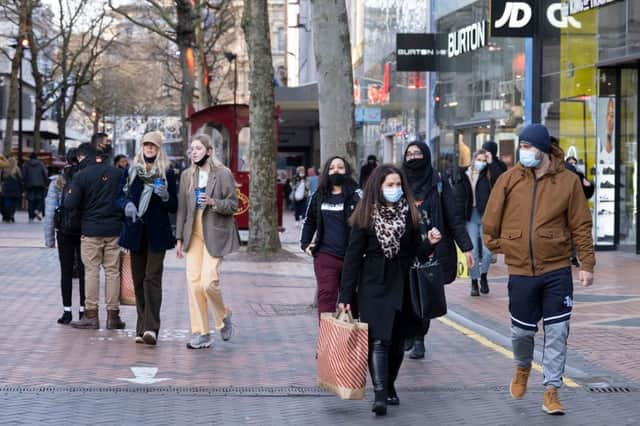These are the Tier 2 and Tier 3 areas with the highest Covid infection rates right now


Large parts of England could be faced with the strictest level of Covid regulations from Boxing Day (26 Dec), as the government considers placing more areas into Tier 4.
Tougher measures may be necessary to try and contain the spread of a mutated strain of coronavirus, which scientists have warned is 70 per cent more infectious than previous mutations.
Which areas are at risk?
Advertisement
Hide AdAdvertisement
Hide AdThe Cabinet’s Covid operations committee will meet today (23 Dec) to consider the latest data on the spread of the virus, after the UK recorded its highest daily increase in cases.
Reports suggest that a so-called ‘Gold Command’ meeting of local leaders and health officials took place on Tuesday (22 Dec) night to discuss the possibility of Birmingham being moved into a Tier 4 lockdown ahead of Christmas, while areas in lower tiers could be moved up to Tier 3.
Genomic researchers have found that the new Covid variant has already spread across the UK, with cases identified in Wales and Scotland, as well as the south of England.
Health chiefs in Cumbria have said the new variant is in the region and could be the reason it has seen sharp increases in new cases, while Lancashire’s director of public health said there is a “high likelihood” that the new variant is in the country.
Advertisement
Hide AdAdvertisement
Hide AdCurrently, Kent, Buckinghamshire, Berkshire, Surrey (excluding Waverley), the boroughs of Gosport, Havant, Portsmouth, Rother and Hastings, all 32 London boroughs and the city of London are all under Tier 4 restrictions.
Bedford, Central Bedfordshire, Milton Keynes, Luton, Peterborough, Hertfordshire, and Essex (excluding Colchester, Uttlesford and Tendring) have also been put into the highest tier following a rise in cases.
The Government is expected to focus on lower tier areas situated next to Tier 4 areas with high infection rates first. This is likely to include Birmingham, Rugby, Burnley, Lincoln and Stoke-on-Trent, as well as West Sussex and parts of East Sussex not already in the top tier.
Sources in the Gold Command meeting have said that the government decided to delay changing the tiers for now, but officials pushed for the whole of England to go into Tier 4 from Boxing Day.
Advertisement
Hide AdAdvertisement
Hide AdThe tier review had been due on 30 December, but fears over the rapid spread of the mutated strain could see the decision brought forward.
Highest infection rates in Tier 2 and Tier 3
There are many parts of England which (at the time of writing) have a higher infection rate than areas in Tier 4, yet they still remain under Tier 2 and Tier 3 restrictions.
The borough of Gosport has an infection rate of 159 cases per 100,000 people, while Chiltern in Bedfordshire and Welwyn Hatfield in Hertfordshire have a rate of 248, which is significantly lower than several areas in lower tiers.
Listed are the Tier 2 and Tier 3 areas which currently have the highest Covid-19 infection rates, and could be at risk of being placed under tougher restrictions:
Tier 2
- Rushmoor - 378 cases per 100,000
- Wealden - 323 cases per 100,000
- Uttlesford - 313 cases per 100,000
- Eden - 295 cases per 100,000
- Colchester - 289 cases per 100,000
- Oxford - 289 cases per 100,000
Tier 3
- Burnley - 438 cases per 100,000
- Lincoln - 409 cases per 100,000
- Boston - 406 cases per 100,000
- Stoke-on-Trent - 341 cases per 100,000
- Pendle - 338 cases per 100,000
- Rugby - 337 cases per 100,000
- East Staffordshire - 331 cases per 100,000
- West Lindsey - 323 cases per 100,000
- Wolverhampton - 300 cases per 100,000
- South Tyneside - 291 cases per 100,000
- Leicester - 288 cases per 100,000
- Gedling - 286 cases per 100,000
- Birmingham - 261 cases per 100,000